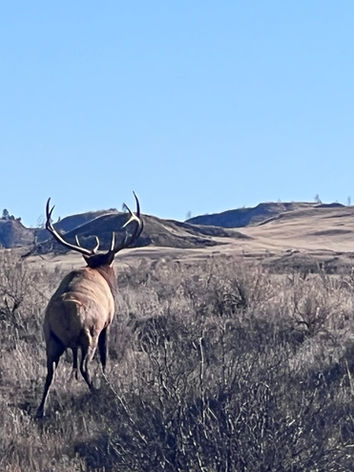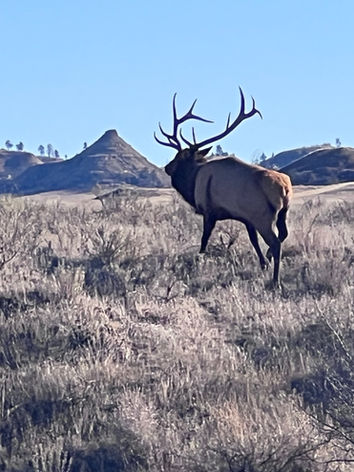What are....
Wapitis and Sheds
Wapiti is another name for the North American elk, specifically the species Cervus canadensis. It's a large deer with large antlers in males, and the name comes from a Shawnee word meaning "white rump," referring to the animal's buff-colored rump.
-
While "elk" is the common name for this animal in many regions, "wapiti" is the more accurate and traditional name, especially among some Native American groups.
-
Wapiti/elk are large deer, the second largest in the deer family after moose. They have brown fur, a yellowish-white patch on their rump, and males possess large, branched antlers that are shed and regrown each year.
-
Wapiti/elk prefer open woodlands and mountain meadows, and were once found across much of North America, though their range is now more restricted to the northwestern United States and southwestern Canada.
Wapitis shed their antlers primarily between January and April, though the majority do so in March. The antler shedding process is influenced by factors like the animal's age, health, and the specific region.
-
Factors influencing shed timing: The antler cycle is influenced by endocrine and neural control, as well as the size, age, and health of the animal.
-
Shed antlers can be found in areas where elk are likely to be found, such as south-facing slopes with vegetation, tight trees, and areas where elk feed or play-fight.
-
Shed antlers can be used for various purposes, including decorations, crafts, and even as part of taxidermy projects.
Shed hunting in Montana is a popular springtime activity where hunters search for antlers that have naturally shed from deer, elk, and moose. The season generally runs from mid-March through early June, with many hunters focusing on the mid-May to early June period when most sheds are likely to be dropped. Shed hunting in Montana is generally open to all ages and does not require a license or tag.
In Colorado, shed hunting (collecting shed antlers) is prohibited on public lands west of I-25 from January 1st to April 30th. This is when many deer, elk, and moose are shedding their antlers, but the state wants to protect the animals during their winter and early spring period. Fines and penalties can be issued for violating these regulations.
In Wyoming, shed hunting, or collecting shed antlers, is generally allowed in many areas from May 1st to December 31st. However, there are important regulations to be aware of, particularly for the Collection Area 1, which includes public lands west of the Continental Divide.

Shed Xmas Tree
This here is probally one of the most interesting items to create with sheds. Trees can be be made up of any size & this one was pretty large & took quite a few sheds to complete.
Wall Lights
Sheds can be created into wall lights, lamps and chandeliers. Not only does this add a rustic feel to a cabin but its even better knowing that it was made in the USA.







